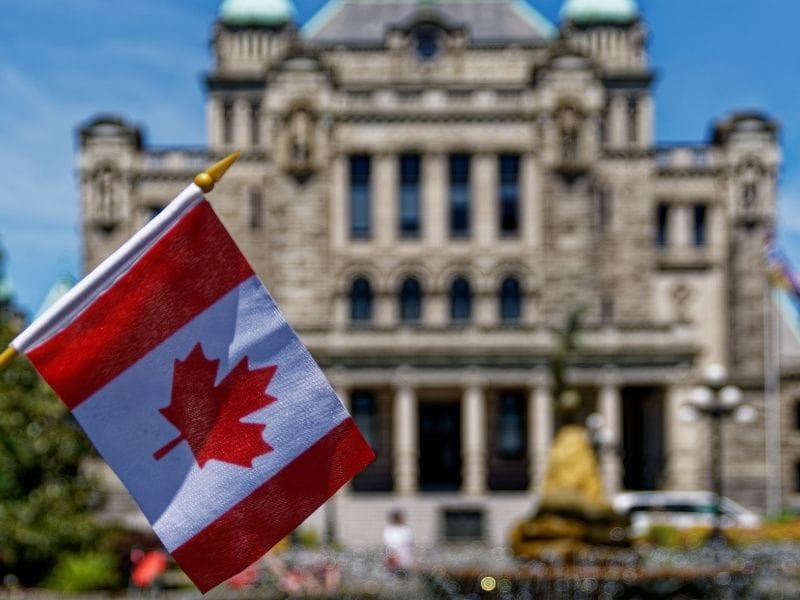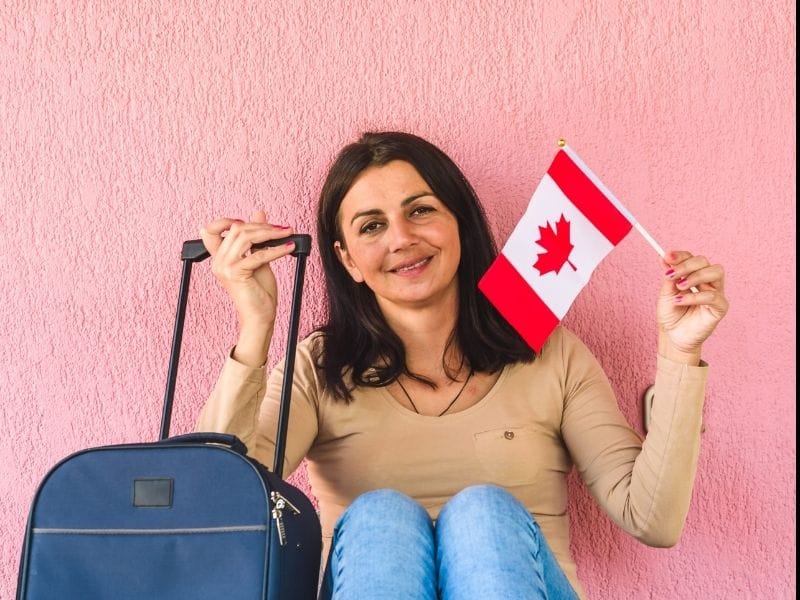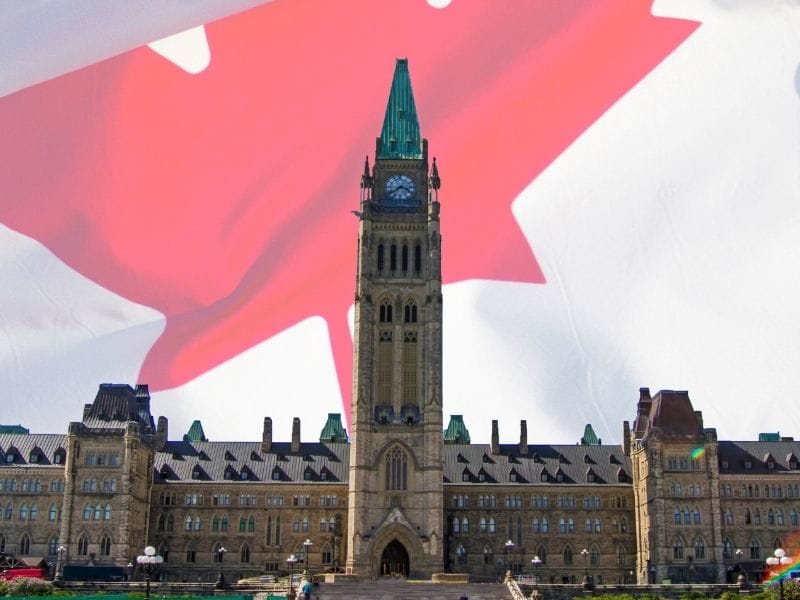Introduction
Canada — the second-largest country in the world — is known for its breathtaking landscapes, diverse cultures, and vibrant cities. Whether you want to explore the Rocky Mountains, see the Northern Lights, or experience world-class cities like Toronto, Vancouver, and Montreal, Canada offers something for every traveler.
In this 2025 guide, we’ll cover everything you need to know about traveling to Canada, from entry requirements and top destinations to budgeting and cultural tips. We’ll also link to authoritative travel resources so you can plan your trip like a pro.https://kanfservices.online/

If you’re planning to travel to Canada, 2025 is the perfect year to explore this breathtaking country. From the towering Rocky Mountains to the charming streets of Quebec City, there’s something for every traveler. Whether you want to enjoy world-class skiing, immerse yourself in vibrant city life, or witness the stunning Northern Lights, travel to Canada offers endless opportunities for adventure. With friendly locals, diverse cultures, and some of the world’s most beautiful national parks, it’s no wonder millions of tourists choose to travel to Canada every year.
1. Entry Requirements for Canada in 2025
Before you pack your bags, make sure you understand the latest entry requirements.
- Passport: A valid passport is required for all travelers.
- Visa or eTA: Many visitors from visa-exempt countries require an Electronic Travel Authorization (eTA) to enter Canada.
🔗 Official Canadian Government Immigration Website - Proof of Funds: Some visitors may be asked to show proof of financial stability.
- Travel Insurance: Highly recommended to cover medical expenses during your stay.
Tip: Requirements may change, so always check the Canada Border Services Agency (CBSA) before your trip.
2. Best Time to Visit Canada
Canada’s seasons are diverse, and the best time to visit depends on your travel goals:
- Summer (June–August): Perfect for road trips, hiking, and festivals.
- Fall (September–October): Stunning fall foliage, cooler weather.
- Winter (November–March): Skiing in Whistler, Banff, or Mont Tremblant.
- Spring (April–May): Blooming flowers, fewer tourists.
For climate averages, check Environment and Climate Change Canada.
3. Top Cities to Explore
Toronto, Ontario
Canada’s largest city offers iconic landmarks like the CN Tower and vibrant neighborhoods.
- Visit the Royal Ontario Museum (official website).
- Shop at St. Lawrence Market.
- Take a ferry to the Toronto Islands.https://kanfservices.online/
Vancouver, British Columbia
A west-coast gem surrounded by mountains and ocean.
- Stroll through Stanley Park (park info).
- Explore Granville Island markets.
Montreal, Quebec
A blend of French charm and modern culture.
- Wander Old Montreal.
- Enjoy the city’s world-class cuisine.
4. Natural Wonders You Can’t Miss
- Banff National Park (Parks Canada site) — Turquoise lakes, hiking trails, and wildlife.
- Niagara Falls (Niagara Parks official site) — One of the world’s most famous waterfalls.
- Jasper National Park — Home to glaciers and stargazing spots.
5. Transportation in Canada
- Flights: Domestic airlines like Air Canada and WestJet connect major cities.
- Trains: VIA Rail offers scenic rail journeys (VIA Rail website).
- Buses: Budget-friendly travel via Greyhound or Megabus.
- Car Rentals: Ideal for exploring remote areas — check Enterprise Canada.
6. Budgeting for Your Trip
| Expense | Average Cost (USD) |
|---|---|
| Budget Accommodation | $50–$80/night |
| Mid-Range Hotel | $120–$200/night |
| Luxury Hotel | $250+/night |
| Meals | $15–$60/day |
| Transportation Pass | $20–$80/week |
7. Cultural Tips
- Canada is bilingual — English and French are official languages.
- Tipping is standard at 15–20% in restaurants.
- Canadians value politeness — a simple “thank you” goes a long way.
Learn more about official entry requirements on the Government of Canada Travel Website.
Explore stunning natural destinations through Parks Canada.
Check Destination Canada for inspiration and trip planning.
8. Top Canadian Festivals in 2025
- Calgary Stampede (official site) — July
- Toronto International Film Festival (TIFF) (tiff.net) — September
- Montreal Jazz Festival (montrealjazzfest.com) — Summer
9. Must-Try Canadian Foods
- Poutine — Fries, cheese curds, and gravy.
- Butter Tarts — Sweet and flaky pastries.
- Maple Syrup Treats — Especially from Quebec’s sugar shacks.
10. Safety & Travel Tips
Canada is generally safe, but:
- Stay updated on weather conditions — especially in winter.
- Use Weather Canada for forecasts.
- Keep emergency contacts handy.
1. Exploring Canada’s Vast Landscapes
Canada is the second-largest country in the world, offering some of the most diverse landscapes and ecosystems. From the rugged mountains of British Columbia to the flat, endless prairies of Saskatchewan, and the coastal beauty of Nova Scotia, every province offers something unique for travelers.
One of the best resources for planning your trip is the Destination Canada website, which provides insights into regional highlights, weather updates, and travel itineraries.
2. Canada’s Top Cities to Visit
Toronto – The Cultural Capital
Toronto is Canada’s largest city, known for its skyscrapers, multicultural neighborhoods, and the iconic CN Tower. The Royal Ontario Museum and Art Gallery of Ontario are must-visits for history and art enthusiasts.
Vancouver – Nature Meets Urban
Nestled between the Pacific Ocean and the Coast Mountains, Vancouver offers outdoor adventures alongside a vibrant food and art scene. The city is also a gateway to Whistler, one of the top ski resorts in the world (Whistler Tourism).
Montreal – A Taste of Europe in North America
Montreal blends French and English cultures, offering incredible food, historic neighborhoods, and a thriving music scene. Don’t miss the Old Montreal district and the Notre-Dame Basilica.

3. Canadian Travel Seasons & Best Times to Visit
Canada’s seasons dramatically change the experience:
- Spring (March–May) – Ideal for cherry blossoms in Vancouver and outdoor exploration in milder weather.
- Summer (June–August) – Peak tourist season with festivals, national parks at their prime, and warm temperatures.
- Fall (September–November) – Famous for its fall foliage, especially in Quebec and Ontario (Parks Canada Fall Colors Guide).
- Winter (December–February) – Perfect for skiing, snowboarding, and winter festivals such as the Quebec Winter Carnival.
4. Entry Requirements & Visa Information
Most travelers will require either an Electronic Travel Authorization (eTA) or a visitor visa before arriving in Canada. The Government of Canada Immigration Website provides the most accurate and up-to-date details on entry requirements.
5. Transportation Tips Inside Canada
Canada’s vastness means you need to plan transportation carefully:
- Flights – Best for covering large distances quickly.
- Trains – VIA Rail offers scenic routes such as The Canadian, connecting Toronto to Vancouver.
- Car Rentals – Ideal for exploring rural areas and national parks.
- Public Transport – Efficient in cities like Toronto, Montreal, and Vancouver.
6. Best National Parks in Canada
Canada is home to over 48 national parks, each offering unique landscapes, wildlife, and outdoor activities. Here are some of the most remarkable ones:
Banff National Park – Alberta
Banff is one of Canada’s most famous parks, located in the Canadian Rockies. Known for turquoise lakes like Lake Louise and Moraine Lake, Banff offers year-round activities — from summer hiking to winter skiing. You can plan your visit through the official Banff National Park Website.
Jasper National Park – Alberta
Larger and less crowded than Banff, Jasper is a UNESCO World Heritage Site, famous for the Columbia Icefield and Athabasca Falls. It’s also an excellent spot for stargazing, as it’s part of a Dark Sky Preserve.
Gros Morne National Park – Newfoundland & Labrador
This park showcases dramatic fjords, cliffs, and mountains. It’s perfect for hiking and exploring the geological wonders of Canada’s east coast.
Yoho National Park – British Columbia
Known for Takakkaw Falls and the Emerald Lake, Yoho offers some of the most photogenic scenery in Canada.
7. Canadian Food & Culinary Delights
Canada’s cuisine reflects its multicultural population. Here are a few must-try dishes:
- Poutine – French fries topped with cheese curds and gravy, originating from Quebec.
- Butter Tarts – A sweet, flaky pastry filled with buttery syrup.https://kanfservices.online/
- Nanaimo Bars – A layered dessert named after the city of Nanaimo in British Columbia.
- Maple Syrup Dishes – Canada is the largest producer of maple syrup in the world. Try maple-glazed salmon or maple butter pancakes.
For a complete Canadian recipe list, check the Canadian Food Network.
8. Hidden Gems & Unique Travel Experiences
While most tourists visit the big cities and famous parks, Canada has lesser-known treasures worth exploring:
- Fogo Island, Newfoundland – Known for its artistic architecture and remote beauty.
- Haida Gwaii, British Columbia – Rich in Indigenous culture and stunning nature.
- Churchill, Manitoba – The “Polar Bear Capital of the World” and a prime location for Northern Lights viewing.
- The Cabot Trail, Nova Scotia – One of the world’s most scenic drives, especially in autumn.
9. Budget Tips for Traveling Canada
Canada can be expensive, but smart planning helps keep costs down:
- Travel in the shoulder seasons (spring and fall) for lower hotel prices.
- Book flights in advance and look for deals on Skyscanner.
- Use VIA Rail passes for affordable train travel between major cities.
- Stay in hostels or Airbnbs to save on accommodation.
- Buy a Parks Canada Discovery Pass for unlimited access to national parks.

10. Cultural Etiquette & Safety in Canada
Canada is generally safe and welcoming, but respecting local customs is essential:
- Politeness – Canadians are known for being polite; saying “please” and “thank you” goes a long way.
- Tipping – It’s customary to tip 15–20% at restaurants.
- Wildlife Safety – Keep a safe distance from animals like bears and moose, especially in parks.
- Indigenous Respect – Learn about and respect Indigenous heritage and traditions during your visit (Indigenous Tourism Association of Canada).
Final Thoughts
Canada offers an unmatched combination of natural beauty, cultural diversity, and world-class cities. Whether you want to hike in the Rockies, enjoy maple-infused treats in Quebec, or watch the Northern Lights in Yukon, the possibilities are endless.
By planning smartly and using trusted travel resources, your Canadian adventure can be both memorable and budget-friendly.
Canada, the world’s second-largest country, is a dream destination for travelers seeking breathtaking landscapes, vibrant cities, and rich cultural diversity. Whether you’re planning to explore the wilderness of the Canadian Rockies, stroll through the historic streets of Quebec City, or enjoy the cosmopolitan charm of Toronto, this guide will cover everything you need to know for your Canada travel adventure in 2025.
1. Why Travel to Canada in 2025?
Canada is a four-season wonderland. From snowy mountain peaks in winter to sunny coastal beaches in summer, every season offers unique experiences. Here are a few reasons why Canada should be on your travel list:
- Stunning Natural Beauty – Home to more than 48 national parks, including Banff National Park and Jasper National Park, Canada is a paradise for outdoor lovers.
- Cultural Diversity – With immigrants from all over the world, Canada offers a blend of cuisines, festivals, and traditions.
- Safe & Welcoming – Ranked among the world’s safest countries, Canada is known for its friendly locals and welcoming environment.
- Adventure Opportunities – Hiking, skiing, kayaking, whale watching — the list goes on.
2. Entry Requirements & Visa Process
Before packing your bags, you need to check entry requirements for Canada.
- For U.S. Citizens: You don’t need a visa, but you must carry a valid passport.
- For Other Countries: Most travelers require an Electronic Travel Authorization (eTA) or a visa. You can check your eligibility on the official Government of Canada travel page.
- COVID-19 Rules (2025): Currently, there are no mandatory testing or quarantine requirements, but it’s best to stay updated via Travel.gc.ca.
3. Best Time to Visit Canada
Canada’s climate varies drastically depending on the region and season:
| Season | Months | Highlights |
|---|---|---|
| Spring | April – June | Cherry blossoms in Vancouver, Niagara Falls in full flow. |
| Summer | June – August | Perfect for hiking, festivals, and exploring national parks. |
| Fall | September – October | Stunning autumn foliage, fewer crowds. |
| Winter | November – March | Ski resorts, Northern Lights, winter festivals. |
Tip: If you want to see the Northern Lights, head to Yellowknife between November and March.
4. Top Cities to Visit in Canada
Toronto – The Cultural Capital
- Home to the CN Tower, world-class restaurants, and a thriving arts scene.
- Explore neighborhoods like Kensington Market and Distillery District.
- Nearby attractions include Niagara Falls, just a 90-minute drive away.
Vancouver – Nature Meets Urban Life
- Coastal city surrounded by mountains and the Pacific Ocean.
- Famous for Stanley Park, Granville Island, and skiing in nearby Whistler.
Montreal – Europe in North America
- French-inspired architecture, world-famous food, and vibrant festivals.https://kanfservices.online/
- Don’t miss the Montreal Jazz Festival and Old Montreal’s cobblestone streets.
Quebec City – A Historical Gem
- Feels like stepping into a European village.
- Old Quebec is a UNESCO World Heritage site.
Calgary – Gateway to the Rockies
- Known for the Calgary Stampede and proximity to Banff and Jasper.
Before you travel to Canada, make sure to prepare your itinerary to get the most out of your trip. Popular destinations like Toronto, Vancouver, and Banff National Park should be at the top of your list. When you travel to Canada, you’ll be treated to unique experiences such as whale watching in Nova Scotia, exploring the historic streets of Montreal, and hiking through pristine wilderness in British Columbia. Whether you’re traveling solo, as a couple, or with family, your decision to travel to Canada will reward you with unforgettable memories and spectacular landscapes.
Learn more about official entry requirements on the Government of Canada Travel Website.
Explore stunning natural destinations through Parks Canada.
Check Destination Canada for inspiration and trip planning.

5. Natural Wonders in Canada
Niagara Falls
One of the most famous waterfalls in the world. You can take a boat ride with Niagara City Cruises for an up-close experience.
Canadian Rockies
Stretching through Alberta and British Columbia, they offer some of the best hiking and skiing in the world.
Prince Edward Island
Famous for its red sandy beaches, seafood, and Anne of Green Gables heritage.
The Northern Lights
Best viewed in the Northwest Territories, Yukon, and Nunavut.
6. Canadian Cuisine You Must Try
- Poutine – Fries topped with cheese curds and gravy.
- Butter Tarts – Sweet, flaky pastry filled with butter and sugar.
- Nanaimo Bars – A no-bake dessert originating from British Columbia.
- Fresh Lobster – Especially famous in Nova Scotia.
For more Canadian food inspiration, visit Canada’s Food Guide.
7. Transportation & Getting Around
- Domestic Flights – Canada is huge, so flying between provinces saves time.
- VIA Rail – Offers scenic train journeys like The Canadian, which runs from Toronto to Vancouver.
- Public Transit – Efficient in major cities like Toronto, Montreal, and Vancouver.
- Car Rentals – Best option for exploring rural areas and national parks.
8. Travel Tips for First-Time Visitors
- Pack for All Weather – Weather can change quickly, especially in mountainous regions.
- Tipping Etiquette – 15–20% in restaurants is standard.
- Currency – The Canadian Dollar (CAD). Check exchange rates before traveling.
- Language – English and French are official languages.
9. Suggested Itinerary for 10 Days in Canada
Day 1–3: Toronto & Niagara Falls
Day 4–5: Calgary & Banff National Park
Day 6–7: Vancouver & Whistler
Day 8–9: Montreal
Day 10: Quebec City
10. Safety & Health Precautions
- Canada is generally very safe, but always be cautious in crowded areas.
- Carry travel insurance — it’s essential for covering medical emergencies.
- For health updates, check the Public Health Agency of Canada.
11. Final Thoughts on Traveling to Canada
Whether you’re looking for adventure, cultural experiences, or stunning landscapes, Canada offers it all. From coast to coast, this vast nation promises unforgettable memories for every traveler.
By planning ahead, exploring both cities and nature, and connecting with locals, your Canadian trip in 2025 will be an experience you’ll cherish for a lifetime.
14. Seasonal Travel Tips for Canada
Canada’s vast size means weather varies greatly between regions, making seasonal planning crucial.
Spring (March–May)
Spring in Canada is a mix of melting snow, blooming flowers, and fluctuating temperatures.
- Best Destinations: Victoria, BC for cherry blossoms; Ottawa for the Canadian Tulip Festival.
- Activities: Wildlife watching in Banff, visiting national parks as they reopen.
- Packing Tip: Light layers, waterproof jacket, and comfortable walking shoes.
Summer (June–August)
The peak travel season with warm temperatures, festivals, and extended daylight hours.
- Best Destinations: Toronto for the Caribbean Carnival, Calgary for the Stampede, Prince Edward Island for beaches.
- Activities: Road trips, camping, hiking, and kayaking.
- Tip: Book accommodations early, as summer fills quickly.
Autumn (September–November)
Cooler air, fall foliage, and fewer crowds.
- Best Destinations: Quebec for its colorful landscapes, Nova Scotia for seafood festivals.
- Activities: Wine tours, scenic drives, photography trips.
- Packing Tip: Sweaters, scarves, and light coats.
Winter (December–February)
Cold temperatures but magical landscapes, especially for snow lovers.
- Best Destinations: Whistler for skiing, Banff for winter hikes, Quebec City for the Winter Carnival.
- Tip: Dress in layers, with insulated jackets, gloves, and thermal wear.
- Resource: Canada Weather Info

15. Public Transportation & Getting Around
Canada’s transportation options vary by city and region.
- Domestic Flights: Airlines like Air Canada and WestJet cover long distances quickly.
- Trains: VIA Rail offers scenic rail journeys like The Canadian between Toronto and Vancouver.
- Buses: Greyhound is no longer operating in Canada, but regional services like Maritime Bus, Rider Express, and Megabus are available.
- Local Transit: Cities like Vancouver, Toronto, and Montreal have reliable buses, subways, and light rail.
- Car Rentals: Essential for remote areas. International travelers need a valid driver’s license and possibly an International Driving Permit.
16. Budgeting for Your Trip
Costs in Canada can add up quickly, so plan wisely.
- Accommodation: Budget hotels start around $70/night, mid-range $120–$200, luxury $300+.
- Food: $15–$25 per meal in casual restaurants; $5–$8 for fast food; $50+ for fine dining.
- Transport: Public transit daily passes around $10; domestic flights vary $100–$400 one-way.
- Attractions: National park entry fees range from $5–$10 per day.
- Savings Tip: Use city passes like the Toronto CityPASS for bundled attractions.
- Resource: Parks Canada Fees
17. Travel Etiquette & Cultural Tips
- Tipping: Standard 15–20% at restaurants.
- Politeness: Canadians are famously polite; saying “please” and “thank you” goes a long way.
- Indigenous Respect: Learn about the First Nations, Métis, and Inuit heritage. Visit cultural centers like the Canadian Museum of History.
- Quebec Language: French is widely spoken; a few phrases in French are appreciated.
18. Top Unique Canadian Experiences
- Aurora Borealis in Yukon or Northwest Territories (best between September and April).
- Ice Wine Tours in Ontario’s Niagara region.
- Polar Bear Viewing in Churchill, Manitoba.
- Kayaking with Orcas in British Columbia.
- Cabot Trail Drive in Nova Scotia for breathtaking coastal scenery.
19. Safety & Health
Canada is one of the safest countries to travel, but always take precautions.
- Emergency Number: Dial 911 for police, fire, or medical help.
- Travel Insurance: Highly recommended to cover healthcare, as it’s expensive for non-residents.
- Wildlife Safety: Keep distance from bears, moose, and other animals; follow park guidelines.
- Resource: Travel Advice from Government of Canada
FAQs – Canada Travel 2025
Q1: Do I need a visa to visit Canada?
It depends on your nationality. Many travelers need an Electronic Travel Authorization (eTA), while others require a visitor visa. Check requirements on Canada.ca.
Q2: What currency is used in Canada?
The Canadian Dollar (CAD). Credit cards are widely accepted, and ATMs are common.
Q3: Is Canada expensive to visit?
Yes, especially in major cities like Vancouver and Toronto. Budgeting is essential.
Q4: What’s the best time to visit Canada?
Summer (June–August) for festivals and outdoor activities; winter (December–February) for snow sports.
Q5: Can I use my US phone plan in Canada?
Yes, but roaming charges may apply. Consider buying a local SIM card.https://kanfservices.online/
Q6: Are there language barriers in Canada?
Mostly no, as English is widely spoken. French is common in Quebec.
Q7: What food should I try in Canada?
Poutine, butter tarts, Nanaimo bars, and maple syrup products are must-tries.
For anyone seeking a mix of nature, culture, and adventure, choosing to travel to Canada is one of the best decisions you can make. From coast to coast, the country offers breathtaking scenery, diverse wildlife, and vibrant cities that cater to every type of traveler. When you travel to Canada, you can explore the majestic Niagara Falls, cruise through the Thousand Islands, or experience the magic of the Northern Lights in Yukon. Every time you travel to Canada, you discover something new, whether it’s a hidden hiking trail, a local food market, or a cultural festival that celebrates the nation’s rich heritage.https://kanfservices.online/

If you’re planning to travel to Canada, you’re about to experience one of the most diverse and welcoming countries in the world. From the bustling streets of Toronto to the serene beauty of Banff National Park, every moment of your travel to Canada adventure will be filled with culture, nature, and unforgettable memories.
Learn more about official entry requirements on the Government of Canada Travel Website.
Explore stunning natural destinations through Parks Canada.
Check Destination Canada for inspiration and trip planning.
Whether you travel to Canada for a short vacation or a long-term stay, you’ll find countless attractions to explore. The vibrant cities, breathtaking mountains, and friendly locals make travel to Canada a dream for adventurers, food lovers, and culture enthusiasts alike.

